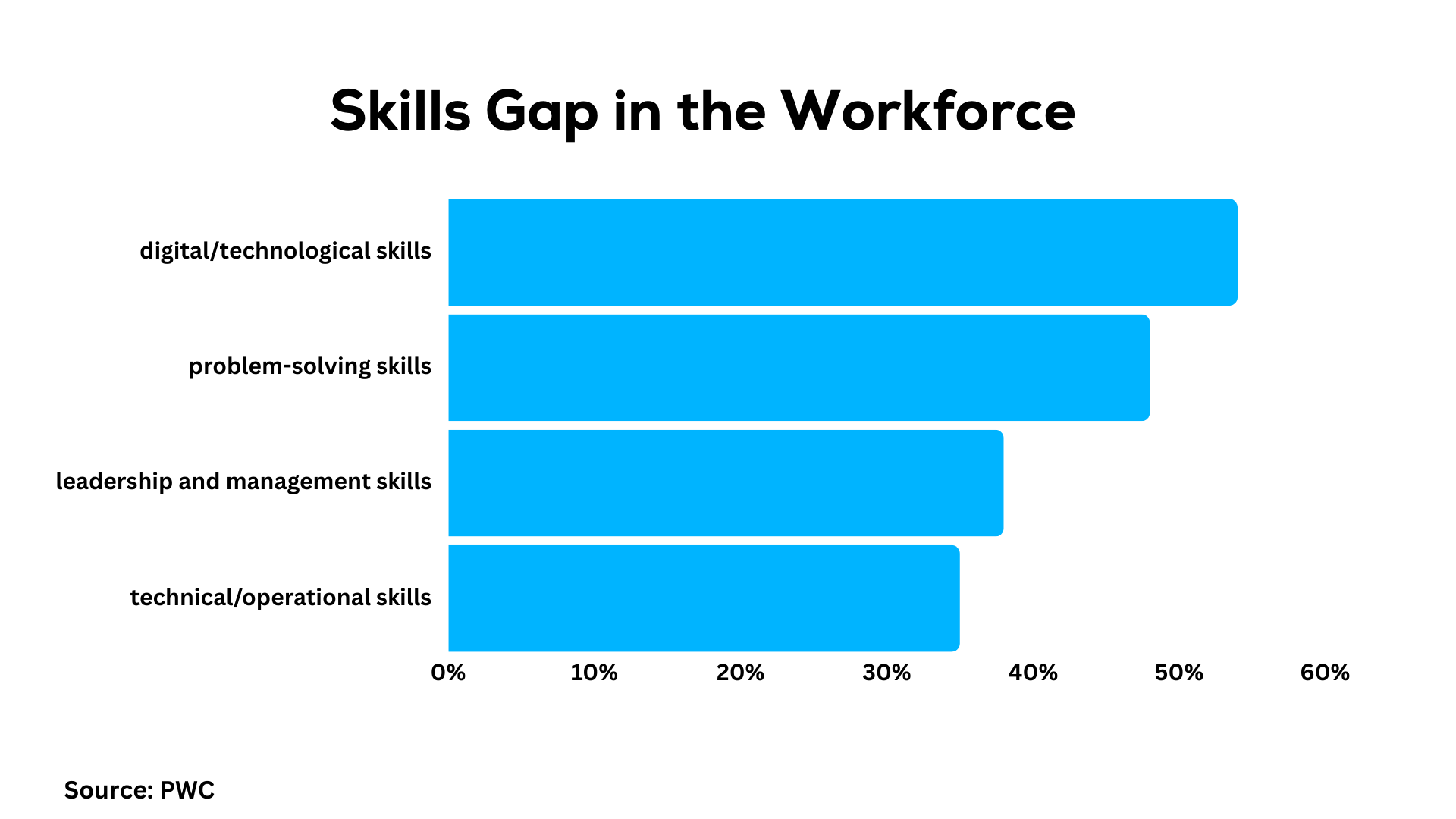Driving Business Success: Harnessing Digital Connectivity
Digital connectivity is a game-changer for businesses, enabling innovation, efficiency, and customer engagement. Companies leveraging AI, automation, and big data can optimize operations and stay competitive. However, digital transformation requires a strong strategy, upskilling employees, and robust cybersecurity measures. This article explores how businesses can harness technology, bridge the skills gap, and enhance customer experiences to drive long-term success.
These days, being connected digitally is a total game-changer for businesses trying to get ahead of the competition. With technology advancing so rapidly, whole industries are being turned upside down, and the recipe for success is being rewritten. Companies that leverage the latest digital tools and maintain connectivity have a significant opportunity to streamline their operations, enhance efficiency, and achieve substantial growth.
In the midst of this transformative shift, it's crucial to understand the profound impact digital connectivity is having on business strategies and day-to-day operations. In this article, we'll dive deep into the core aspects of digital transformation and explore how organizations can leverage all these cutting-edge digital tools and technologies to crush their goals and deliver value to everyone involved employees, customers, partners, you name it.
The Role of Technology in Business Innovation
In the current landscape, with businesses emerging rapidly, innovation is paramount for outpacing competitors. Embracing the latest digital technologies is key to helping drive that innovation across all parts of your company whether it's creating new products, streamlining operations, or anything in between.
Companies need to do more than keep doing the same old things they've always done. To truly stay ahead of the pack, you've got to constantly explore how new technologies like AI, automation, data analytics, and more can transform how you conceive new offerings and optimize inefficient processes. Upgrading your tech capabilities allows you to work smarter, move faster, and deliver more unique value that gives you an edge.
But make technological innovation a priority, and suddenly new opportunities begin to emerge for developing game-changing products and services that keep you relevantly profitable for years to come.
One of the primary ways technology facilitates innovation is by enabling businesses to collect and analyze vast amounts of data. By leveraging big data analytics, artificial intelligence (AI), and machine learning, organizations can uncover valuable insights, identify patterns, and make data-driven decisions that drive innovation. For example, companies can use data analysis to identify untapped market opportunities, optimize product designs, or streamline supply chain operations.
However, it's important to note that technology alone is not sufficient for driving innovation. Organizations must cultivate an innovation-friendly culture that encourages experimentation, embraces risk-taking, and encourages a mindset of continuous learning and improvement. By combining the power of digital technologies with an innovation-driven mindset, businesses can unlock new opportunities, create competitive advantages, and drive long-term growth and success.
The Impact of Digital Technology
Digital transformation is no longer an option, it's imperative for survival and growth. Many companies struggle with digital transformation due to inadequate strategies, leading to challenges in maintaining competitive parity despite significant investments in technology. An assessment of digital capabilities and a clear roadmap for integrating disruptive technologies across functions are crucial for a successful transformation.
According to a study by the Harvard Business Review, companies that effectively scale digital transformation initiatives can achieve up to 16% higher revenue growth and 26% higher profit margins compared to their industry peers.
Organizations that fail to adapt to the digital landscape risk becoming obsolete. Conversely, those who embrace digital transformation can leverage its potential to drive innovation, streamline operations, and enhance customer experiences.
Organizations investing in digital transformation can attract top talent through IMDA careers, focusing on equipping professionals with the necessary skills to navigate the digital economy. By using cutting-edge tools and innovation, businesses achieve sustained success and future-proof their operations. Moreover, a resilient digital infrastructure ensures businesses can adapt to evolving market dynamics and capitalize on emerging trends, driving growth and business success in this increasingly digital economy.
Navigating the Skills Gap

The rapid pace of technological change has disrupted the job market, creating a significant skills gap. As certain roles become automated or obsolete, new roles emerge, requiring specialized digital skills and knowledge. This upskilling poses a significant challenge for organizations, hindering their ability to innovate and remain competitive.
To address this challenge, leaders must prioritize upskilling and reskilling initiatives. Investing in employee training programs, fostering a culture of continuous learning, and collaborating with educational institutions can help bridge the skills gap. Additionally, attracting and retaining top digital talent is crucial for driving innovation and maintaining a competitive edge.
A report by the World Economic Forum estimates that by 2025, 85 million jobs may be displaced by automation and artificial intelligence, while 97 million new roles may emerge, highlighting the need for reskilling and upskilling efforts.
Enhancing Customer Experience through Technology Integration
In today's competitive marketplace, delivering exceptional customer experiences is paramount for businesses to thrive. Digital connectivity and technology integration play a crucial role in enhancing customer experiences across various touchpoints, from initial engagement to post-purchase support.
By leveraging cutting-edge technologies, organizations can create personalized, seamless, and memorable experiences that foster brand loyalty, drive customer satisfaction, and ultimately, fuel business growth.
Omnichannel Integration
One key strategy is leveraging omnichannel integration, which ensures a seamless and consistent experience for customers across multiple channels, such as websites, mobile apps, social media, and physical stores. By integrating these channels, businesses can provide personalized and context-aware interactions, making it easier for customers to engage with the brand on their preferred platform.
According to a study by Harvard Business Review, companies with robust omnichannel customer engagement strategies retain 89% of their customers, compared to just 33% for companies with weak omnichannel strategies.
Artificial Intelligence and Machine Learning
Artificial intelligence (AI) and machine learning (ML) technologies can significantly enhance customer experiences. Chatbots and virtual assistants powered by AI can provide 24/7 support, addressing customer inquiries and resolving issues promptly. Additionally, ML algorithms can analyze customer data to deliver personalized recommendations, targeted promotions, and tailored content, creating a highly relevant and engaging experience.
A report by Salesforce states that 76% of customers expect consistent interactions across channels, and 66% expect companies to understand their unique needs and expectations.
Internet of Things (IoT)
The Internet of Things (IoT) is revolutionizing customer experiences by connecting physical products to the internet. By gathering valuable data on usage patterns, performance, and customer preferences, businesses can improve product design, offer predictive maintenance services, and provide personalized recommendations, ultimately enhancing the overall customer experience.
According to a study by Gartner, there will be 25 billion IoT-connected devices by 2025, creating a significant opportunity for businesses to leverage IoT data to improve customer experiences.
Augmented and Virtual Reality
Augmented reality (AR) and virtual reality (VR) technologies are transforming the way customers interact with products and services. AR can enable virtual product demonstrations, allowing customers to visualize how a product would look in their environment before making a purchase. VR can create immersive experiences, such as virtual showrooms or simulations, providing customers with a unique and engaging way to explore products and services.
A report by Shopify states that 63% of customers consider AR experiences an essential factor in their purchasing decisions, highlighting the growing importance of immersive technologies in enhancing customer experiences.
By integrating these technologies seamlessly, businesses can create a differentiated and memorable customer experience, fostering brand loyalty, increasing customer satisfaction, and driving long-term growth and success. However, it's important to strike a balance between technology integration and maintaining a human touch, as customers still value personalized interactions and empathetic support when needed.
The Social Enterprise: Connecting People and Purpose
In the digital age, businesses are no longer solely focused on profit motives. Consumers, employees, and stakeholders are increasingly expecting organizations to contribute positively to society and align with environmental and social goals. Digital connectivity has enabled businesses to technology integration and impact into their core strategies, fostering a more sustainable and responsible approach to operations.
Purpose-driven organizations leverage digital technologies to drive sustainable practices, promote inclusivity, and contribute to the well-being of local communities. This approach resonates with socially conscious consumers, attracts top talent, and strengthens brand reputation and loyalty.
Employee Engagement and Collaboration
The rise of remote work and virtual teams has redefined the concept of the traditional workspace. Digital connectivity and collaboration tools have become integral to fostering a connected workforce that transcends physical boundaries. By embracing digital technologies, organizations can promote employee engagement, productivity, and a sense of belonging, regardless of location.
Effective communication, knowledge-sharing, and inclusive practices are key to unlocking the full potential of a distributed workforce. Leaders must prioritize creating a digital workplace that fosters collaboration, empowerment, and a culture of trust and transparency.
Strategies for Effective Digital Connectivity
Using the potential of digital connectivity demands a strategic and carefully well-planned approach. Organizations need to deploy effective strategies to harness digital technologies, interact with customers, and propel business expansion. Here are some key strategies for effective digital connectivity:
1. Data-Driven Decision Making
In the digital age, data is a valuable asset that can provide a competitive advantage. Organizations that leverage big data and advanced analytics can extract valuable insights to inform strategic decisions, identify emerging trends, and seize new opportunities.
Implementing robust data management systems and upskilling employees in data literacy are crucial steps toward becoming a data-driven organization. According to a study by McKinsey & Company, data-driven organizations are 23 times more likely to acquire customers, 6 times more likely to retain customers, and 19 times more likely to be profitable.
2. Customer-Centric Approach
Digital connectivity allows businesses to understand customer preferences, behaviors, and expectations like never before. By leveraging data analytics, personalization technologies, and omnichannel strategies, companies can tailor their offerings, communications, and customer experiences to meet individual needs.
A customer-centric approach not only enhances satisfaction and loyalty but also enables businesses to identify new revenue streams and differentiate themselves in crowded markets. According to a report by Salesforce, 66% of customers expect companies to understand their unique needs and expectations, and 76% expect consistent interactions across channels.
3. Cybersecurity and Risk Management
As digital connectivity increases, so do potential cybersecurity threats. Protecting digital assets and sensitive information from cyber attacks, data breaches, and online fraud is paramount for maintaining consumer trust and business continuity. Organizations must prioritize robust cybersecurity measures, including employee training, regular software updates, and comprehensive risk management strategies.
Proactive measures and a culture of cybersecurity awareness are essential for mitigating risks in the digital landscape. According to a report by Cybersecurity Ventures, the global cost of cybercrime is expected to reach $10.5 trillion annually by 2025, highlighting the importance of effective cybersecurity strategies.
4. Navigating the E-Commerce Landscape
The rise of e-commerce has disrupted traditional retail models, presenting both opportunities and challenges. Digital connectivity plays a pivotal role in enabling organizations to establish an online presence, reach global markets, and provide seamless omnichannel experiences.
Successful e-commerce strategies rely on robust digital infrastructure, leveraging data analytics, personalization technologies, mobile optimization, and offering omnichannel experiences. According to a study by Cisco, retail businesses that prioritize digital transformation experience an average revenue growth of 8.7% and an increase in customer loyalty of 7.8%.
Best Practices for Implementing Digital Connectivity Solutions
Implementing digital connectivity solutions is a complex process that requires careful planning, execution, and continuous optimization. To maximize the benefits and ensure a successful implementation, businesses should follow these best practices:
-
Conduct a Comprehensive Assessment: Before embarking on a digital transformation journey, organizations should conduct a thorough assessment of their current infrastructure, processes, and capabilities. Identifying gaps, pain points, and areas for improvement will help prioritize initiatives and allocate resources effectively.
-
Develop a Clear Roadmap: Based on the assessment, businesses should develop a detailed roadmap that outlines specific goals, timelines, and milestones. This roadmap should align with the organization's overall strategy and provide a clear path for implementing digital connectivity solutions.
-
Foster a Culture of Collaboration and Agility: Digital transformation requires a cross-functional effort involving various departments and stakeholders. Fostering a culture of collaboration, open communication, and agility is essential for seamless implementation and adaptation to changing requirements.
-
Invest in Employee Training and Change Management: Introducing new technologies and processes can be disruptive for employees. Organizations should invest in comprehensive training programs and implement effective change management strategies to ensure a smooth transition and user adoption.
-
Prioritize Data Security and Privacy: As digital connectivity increases, businesses must prioritize robust cybersecurity measures and adhere to data privacy regulations. Implementing secure protocols, conducting regular risk assessments, and promoting a culture of security awareness are crucial.
-
Continuously Monitor and Optimize: Digital connectivity solutions should be continuously monitored and optimized based on performance metrics, user feedback, and evolving market trends. Businesses should remain agile and adapt their market expansion as needed to maintain a competitive edge.
By following these best practices, organizations can effectively navigate the complexities of implementing digital connectivity solutions, mitigate risks, and maximize the potential benefits for long-term success in the digital landscape.
Measuring Digital Success
Simply implementing digital connectivity solutions is just the beginning, it's equally important to measure the success of these efforts. By defining clear metrics and Key Performance Indicators (KPIs), businesses can monitor their progress, pinpoint areas needing improvement, and use data-driven insights to refine their digital strategies.
Here are some key metrics to consider when measuring digital success:
-
Customer Acquisition and Retention: Track metrics such as website traffic, conversion rates, customer lifetime value, and churn rates. These metrics provide insights into the effectiveness of digital marketing efforts and customer engagement strategies.
-
Operational Efficiency: Measure factors like process automation, time-to-market, and cost savings. These metrics help assess the impact of digital connectivity on streamlining operations and increasing productivity.
-
Employee Engagement and Collaboration: Monitor metrics such as employee satisfaction, adoption rates of collaboration tools, and productivity metrics. These insights help gauge the success of digital workplace initiatives and employee empowerment.
-
Revenue and Profitability: Track revenue growth, profit margins, and return on investment (ROI) for digital initiatives. These metrics directly reflect the financial impact of digital connectivity strategies.
-
Cybersecurity and Risk Management: Measure the effectiveness of cybersecurity measures by tracking incidents, response times, and compliance with industry standards. These metrics ensure the protection of digital assets and customer trust.
-
Sustainability and Social Impact: Evaluate metrics related to carbon footprint reduction, resource efficiency, and positive contributions to local communities. These metrics align with the organization's purpose and social responsibilities.
Establishing a complete measurement framework and regularly reviewing these metrics is essential for understanding the true value of digital connectivity investments. By continuously monitoring and adjusting strategies based on data-driven insights, businesses can optimize their digital efforts, stay ahead of the competition, and drive long-term success in the digital age.
Conclusion
In the digital age, connectivity is more than just a technological advancement, it's a catalyst for business transformation. By harnessing the power of digital tools and technologies, organizations can unlock new levels of efficiency, innovation, and customer engagement.
Embracing a data-driven, customer engagement platform approach while prioritizing cybersecurity and risk management is crucial for driving sustainable success. Businesses that proactively navigate the digital landscape and align their strategies with societal and environmental goals will emerge as leaders in their respective industries.

Subscribe & get all related Blog notification.





Post your comment